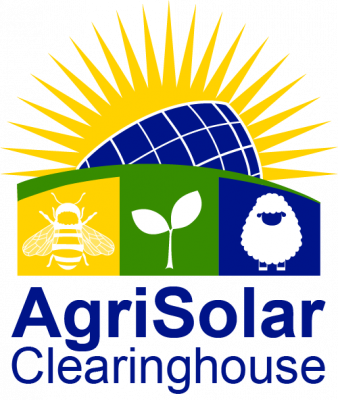This Wisconsin Extension publication concerns energy conservation as a result of heat recovery in continuous flow column dryers. The publication includes details on heat recovery and cooling options for continuous flow dryers.
Tag Archive for: Agrivoltaics
This NCAT ATTRA publication briefly discusses some of the considerations and potential benefits involved in the use of animal power and offers resources for further information and equipment. The publication includes an overview of uses and power potential for horses, mules, oxen and add-a-unit flexibility as well as considerations for safety and suitability and scarcity of knowledge and equipment.
This NCAT ATTRA publication provides an overview of how dairy farms can implement efficiency improvements and energy-saving technologies that can reduce energy consumption and energy-related costs. The publication includes details on the milking process, milk cooling systems, heating water and lighting.
This North Dakota State University Extension article concerns energy efficiency opportunities in tractors and field operations. The checklist includes a list of questions to ask related to proper tire inflation, RPM speed on larger tractors and shading for fuel storage. The document also includes a list of facts and actions regarding tractor maintenance, machine cost calculator and wheel slippage.
This NCAT ATTRA publication describes how to fi nd the net water application rate for any irrigation system. It further explains how to calculate the number of hours the system should be operated, describes several ways to measure flowing water in an open channel or pipeline, and offers suggestions for irrigating with limited water supplies.
This NCAT ATTRA publication explains how to maintain irrigation pumps, motors, and engines for peak efficiency. The publication includes descriptions and diagrams of recommended installations, checklists for maintenance tasks, and a troubleshooting guide. Each system component is treated separately and maintenance tasks are broken down by how frequently they need to be done.
This publication by Penn State Extension provides energy saving tips for Dairy Farmers. Included in this document are tips relating to variable speeds on vacuum pumps, pre coolers for cooling milk, tuning vacuum systems and heat recovery from milk-cooler compressors.
This Wisconsin Public Service publication concerns high-volume low-speed (HVLS) fans as a ventilation option for dairy and livestock farmers. The publication includes information on air velocity related to cow comfort, air velocity obstructions and diagrams showing air velocities in feet per minute.
This NCAT ATTRA publication describes the installation of the heat recovery equipment and provides an analysis of data on humidity and temperature in the winter growing tunnels used in the project. The publication includes details on the trial of a heat recovery ventilation (HRV) system as an alternative to traditional ventialtion in tunnel production. The installation process of the heat recovery equipment is provided.
With more than 600,000 miles of operational transmission lines throughout the U.S., there is a significant opportunity for investments in conservation. By establishing native vegetation in these project corridors, developers and private landowners can add value to the rights of way used by electric transmission infrastructure. The size of prairie strips and the goal of providing conservation outcomes allows landowners and developers to work together to adopt this practice on private farmland within transmission line corridors. Farmers and project developers contemplating the adoption of prairie strips on private lands within transmission line corridors should also note that the width of an individual prairie strip may be adjusted to accomplish the purpose of the practice, prairie strips may not exceed 25 percent of the cropland area per field, developers could form agreements with participating and/or surrounding landowners to manage this vegetation, the Federal Energy Regulatory Commission has vegetative height requirements depending on transmission line voltage and type, and owners of public land may also qualify for cost-share for prairie strips through CRP if the land is being farmed.
